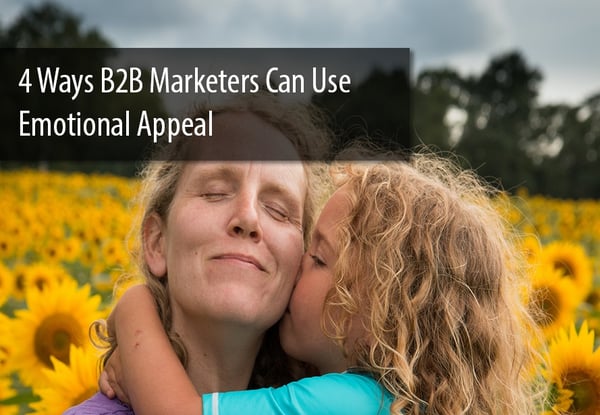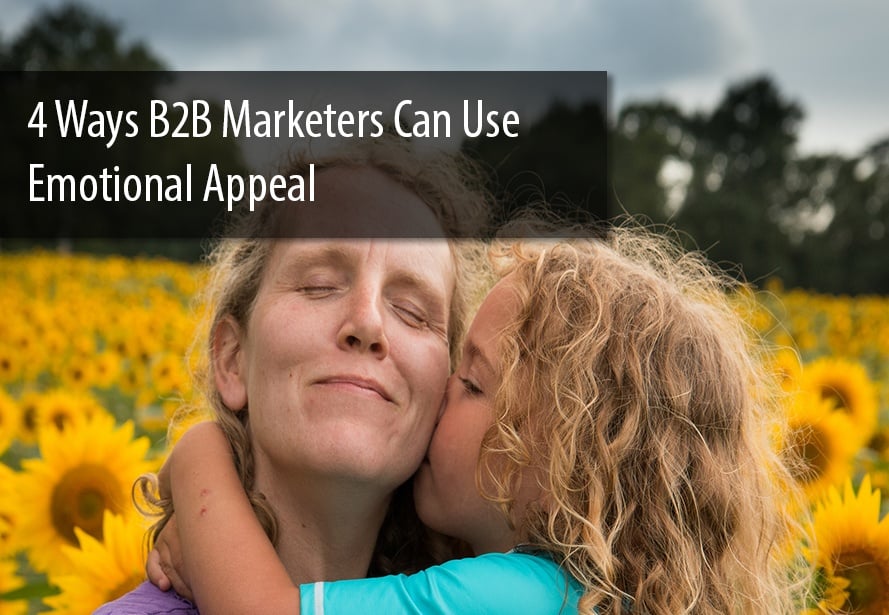Lessons in Emotional Appeal: What B2B Marketers Can Learn from B2C “Mom Commercials”

Here at Denamico, we love moms. Some of us are moms and others of us just really love our moms, grandmas, sisters, aunts, daughters, and all the motherly figures in our lives. It turns out, we’re not alone. Companies that specifically target moms as customers advertise to them by creating compelling, relatable stories that are often pretty emotional.
Because emotional appeal is one of the best ways to create lasting brand awareness, B2C brands use it as a tactic when creating mom-focused commercials, especially around Mother’s Day.
Some of my personal favorite “mom commercials” are viral internet hits. You might have seen the recent Pandora commercial that shows children picking their moms out of a line-up while blindfolded. Maybe you remember Google’s 2013 commercial “Here’s to the Moms” or my all-time favorite, the 2014 Sochi Olympics Commercial by P&G, “Thank You Mom” (make sure to have tissues nearby).
You might be thinking, “I’m a B2B marketer...what does this have to do with me?” Though you may not have the budget or even the need to develop a heartfelt “story” commercial, there are other ways you can reach out to your buyer personas in ways that are emotional or at least meaningful to them. That’s why it’s important to research your target audience and develop in-depth personas — you need to understand what will elicit an emotional reaction from your ideal buyer.
As a B2B marketer, you’re probably targeting business executives, but they’re people too. You should research what makes them happy, sad, and mad so you can reach out to them in ways that are emotionally sensitive.
Here are a few ways smart B2B companies are using emotional appeal:
1. Create an aspirational mission and inspire prospects and customers to join you
HubSpot’s founding team used pre-existing ideas and philosophies to develop the “inbound marketing methodology” an approach that encourages marketers to use HubSpot's marketing automation platform to deliver a more human experience to prospects and customers.
The methodology is separate from the product, inspirational, and focuses on freeing customers from the interruptive marketing they know everyone hates. They know no one likes pop-up ads or telemarketer calls, so they created a mission to rid the world of these things and developed the tools to make it happen.
Over the years, HubSpot has used numerous tactics to spread their methodology and to inspire prospects to adopt it. This video, played at their 2013 Inbound Conference, made marketers feel they could be a part of something bigger by buying into the methodology (& buying HubSpot’s product).
2. Play to your prospect's pet peeves
Adobe focuses on creative marketing professionals who they know are annoyed by typical marketing “buzzwords.” To elicit reactions from this group, they developed a popular video featuring a “B.S. Detector,” a pretend brain scanner that zaps marketers when they use common buzzwords. While humorous and entertaining, the video also creates a common understanding between Adobe and its prospects and customers — buzzwords are bad and results are good. What savvy marketer wouldn’t buy in to that message?
3. Advocate for a cause your audience cares about
Last month, Marc Benioff, CEO of Salesforce, got major press by decrying Indiana’s “religious freedom” law because it would allow businesses to refuse service to LGBT customers.
He has stated that his advocacy was “an effort to help his employees and customers whom the law might have affected, something he describes as being key to his personal philosophy.”
By making public statements against the law, threatening to decrease investment in the state, offering relocation perks to Indiana employees, and more, Benioff was influential in pressuring the governor to add a revision that prohibited businesses from discriminating against LGBT customers.
Though it might sound like charity, Benioff believes this type of advocacy work is key to business. He says, “CEOs are very much the advocates of their customers and employees, as well as of the environment and local communities. The most successful CEOs today are advocates for their stakeholders, not just their shareholders.”
Benioff understands that people like to work with companies who share their values. Looking at the demographics and views of Salesforce’s target audience, he’s identified that his key constituents have negative views on LGBT discrimination.
After widespread backlash and the resulting revision, Salesforce released the following video to show their support for their LGBT (& ally) prospects, customers, and employees:
4. Be funny!
If you don’t have an uplifting, inspirational message, an interest in cause advocacy, or a huge budget to work with, you can always be funny.
If your audience likes to have a good laugh (who doesn’t?), make a list of topics they might think are funny. A great place to start as I mentioned above are pet peeves. Lattice Engines, a predictive analysis software company, made a video I featured here on the blog a few months ago. It hilariously mocks marketing and salespeople and exploits our differences in a way both groups would likely find humorous. You can watch the video here.
Whether you want to champion a cause or make your audience feel good about their moms, emotional appeals are a great way to garner support, awareness and loyalty for your brand and product. Have you tried using emotional appeal in your B2B marketing? Tell us about it in the comments below.
Image by Barney Moss via flickr, licensed under CC by 2.0

